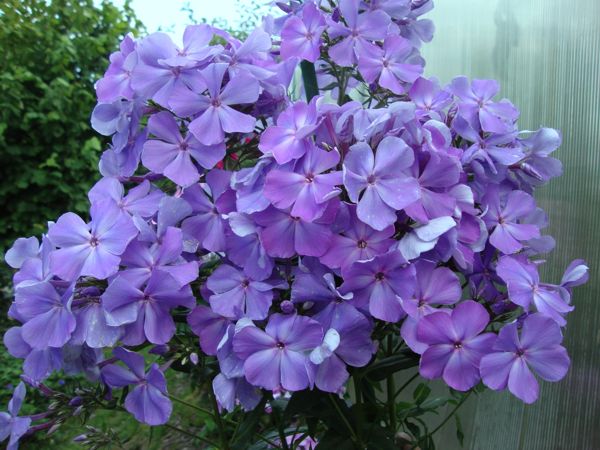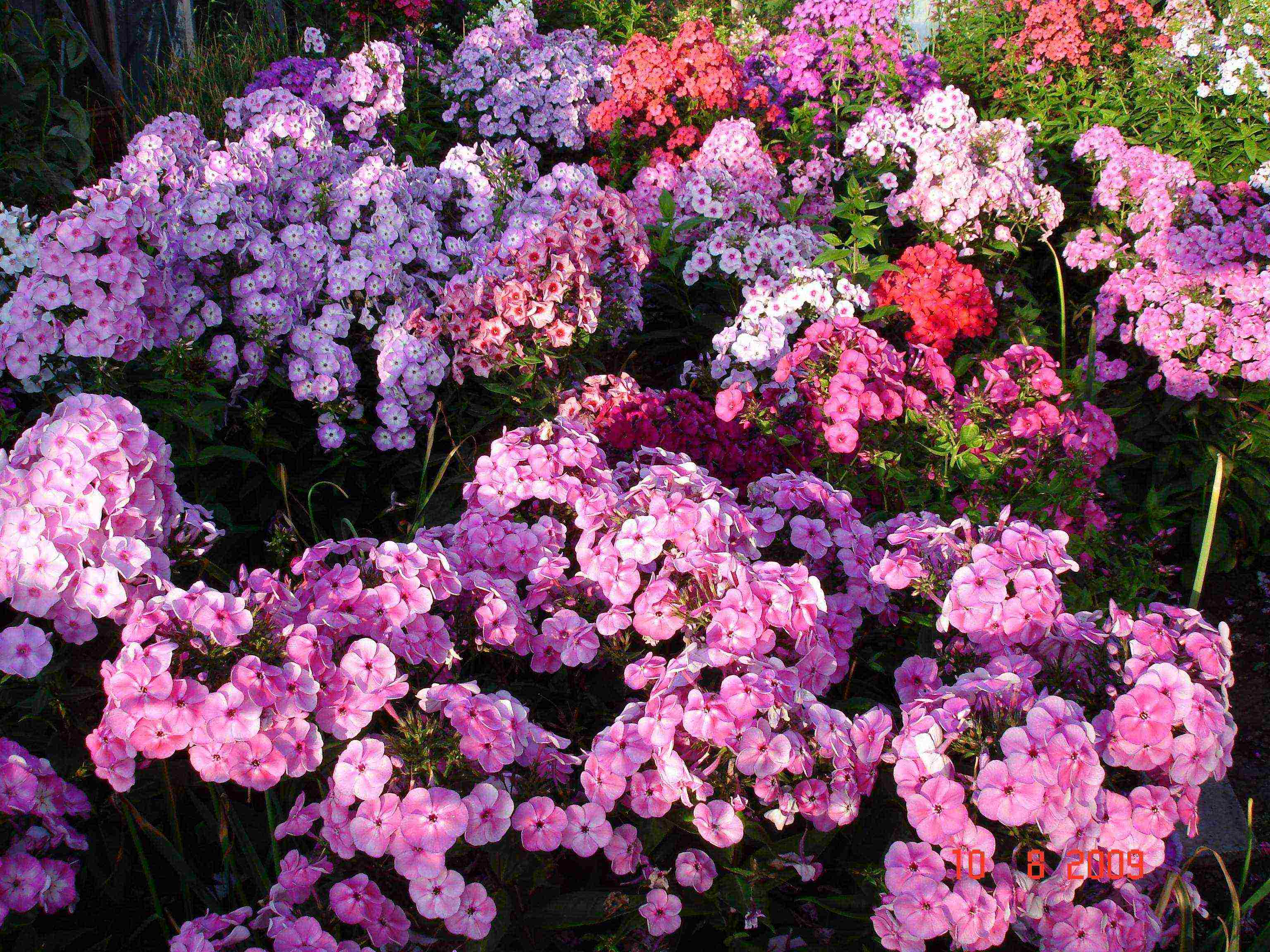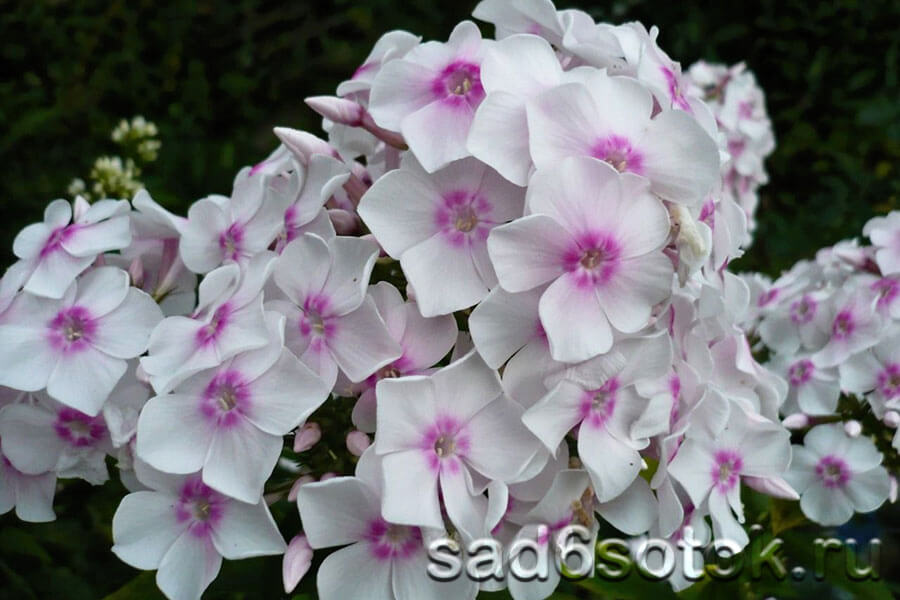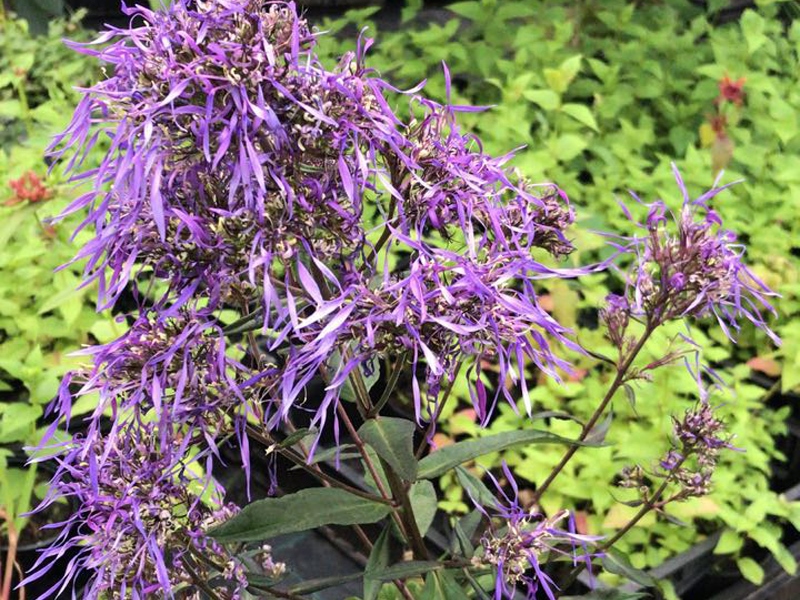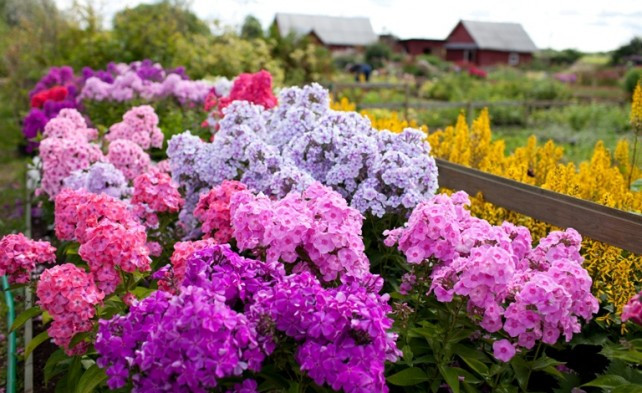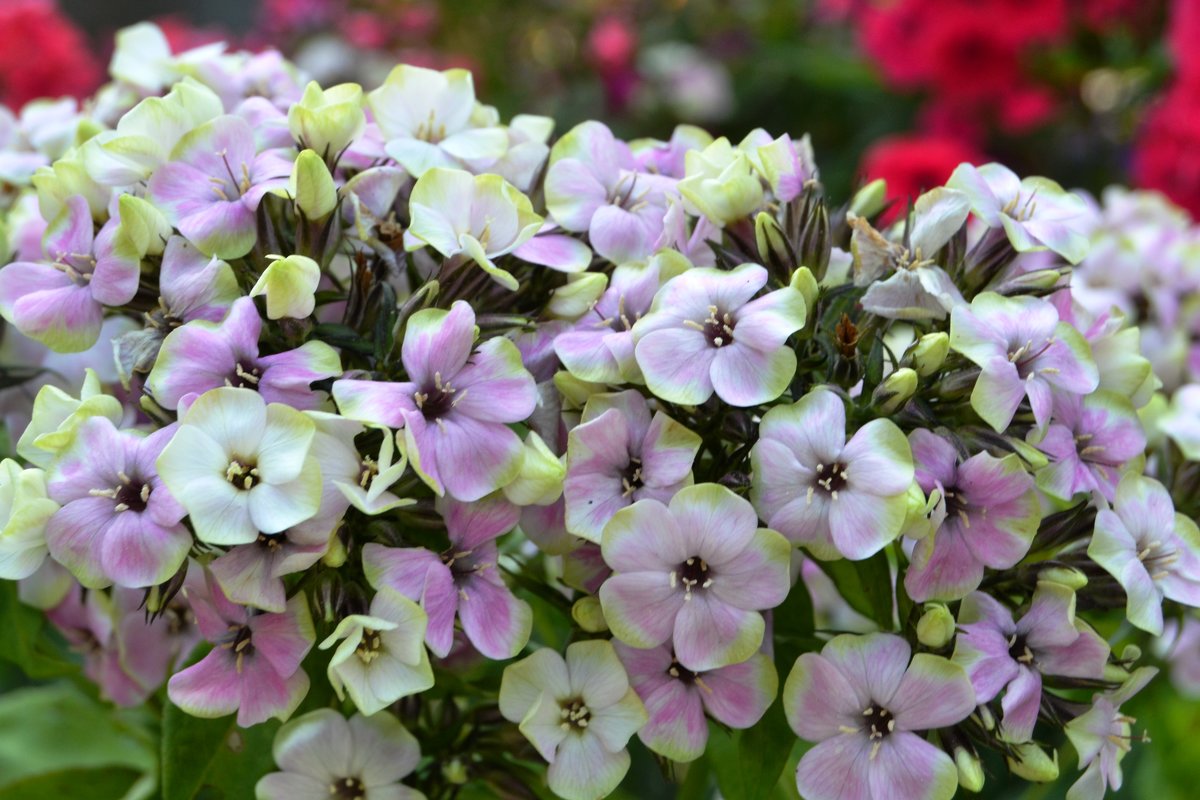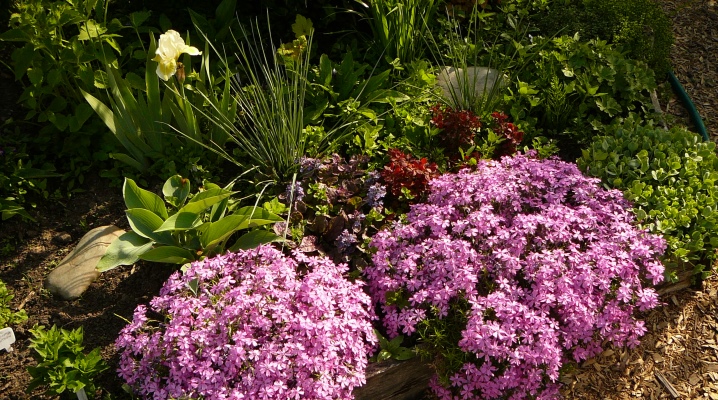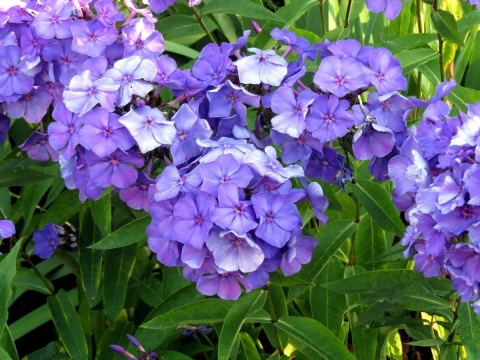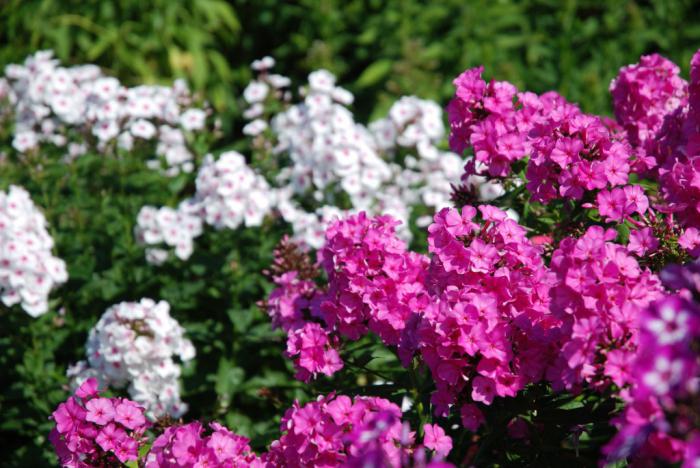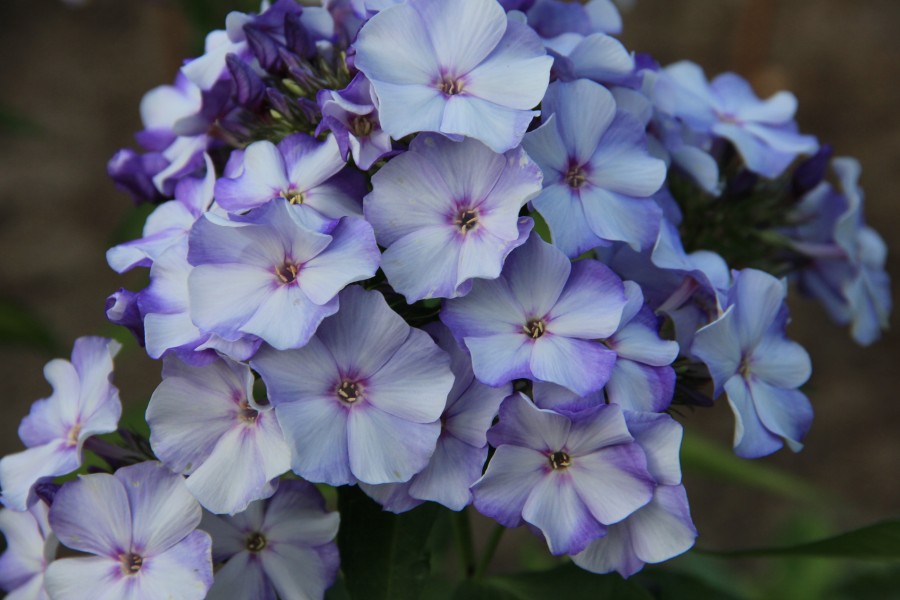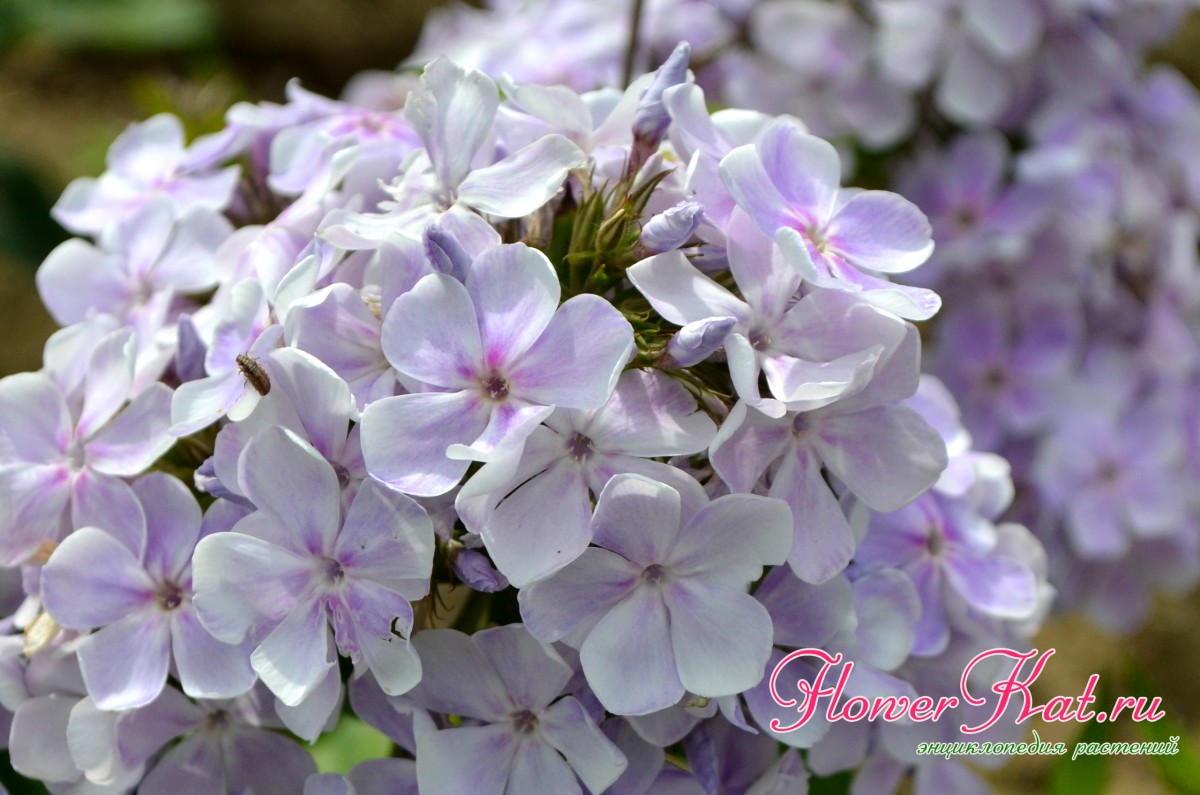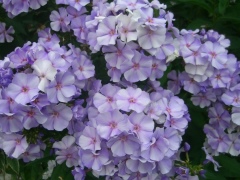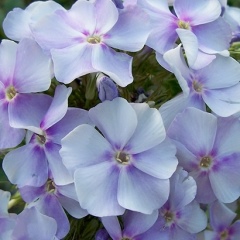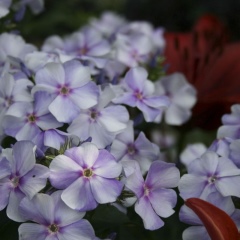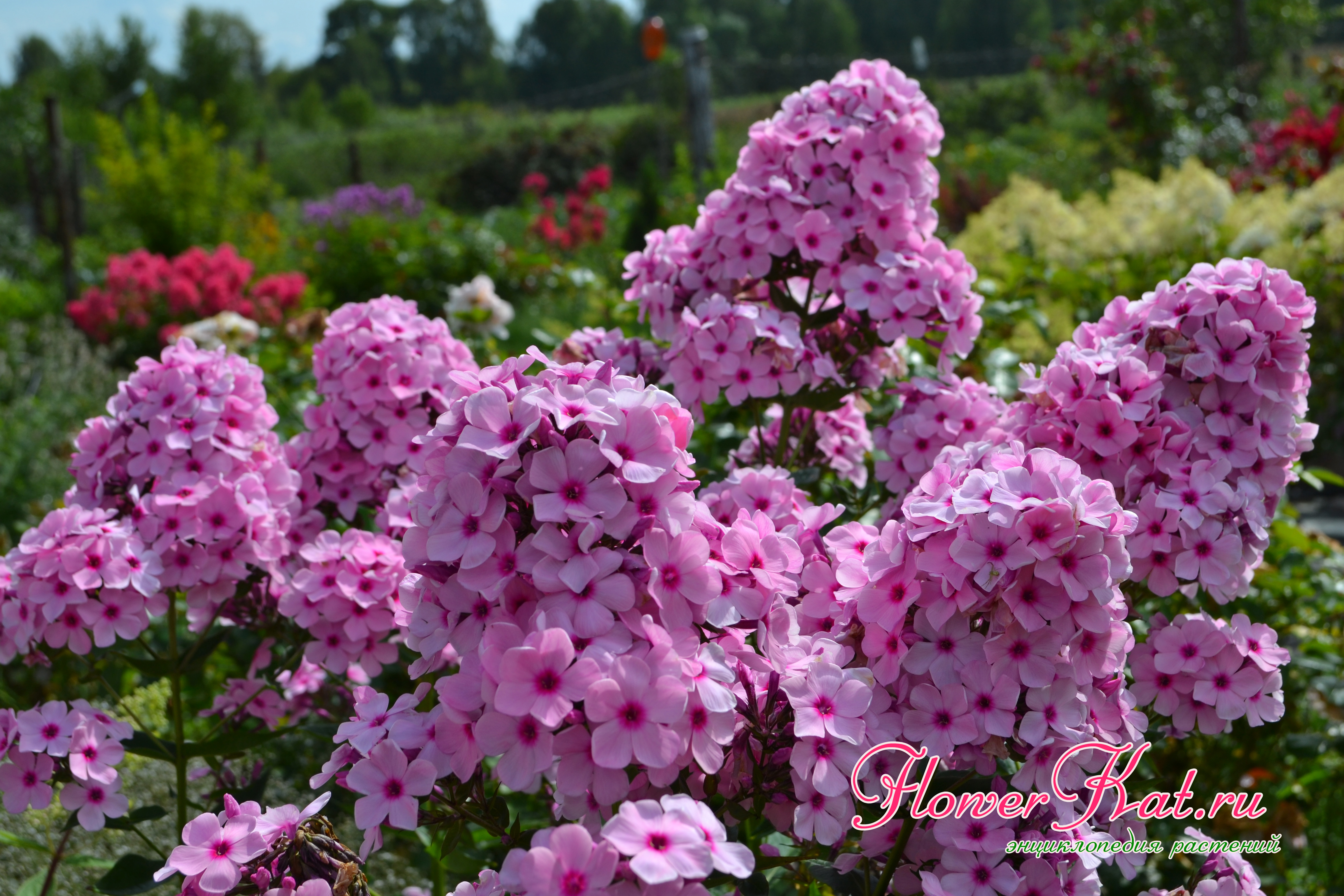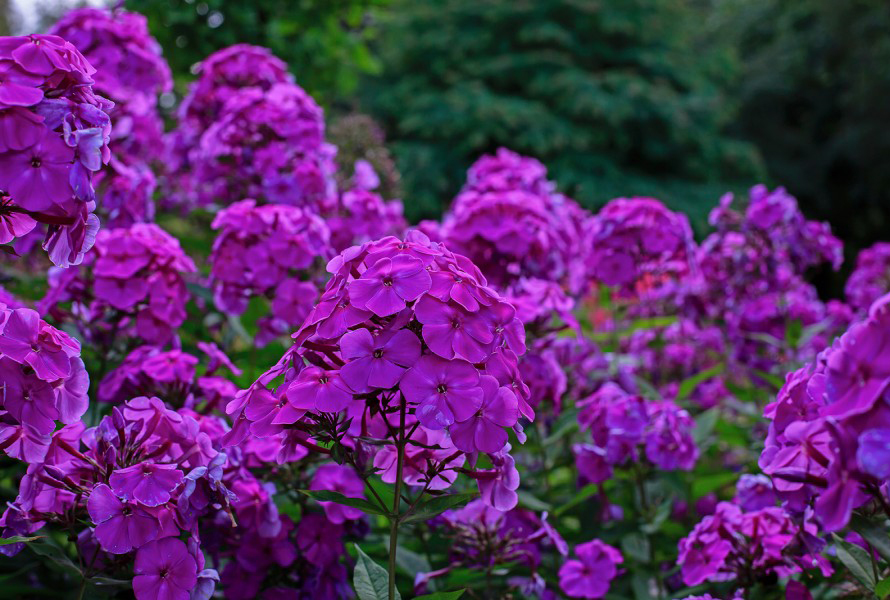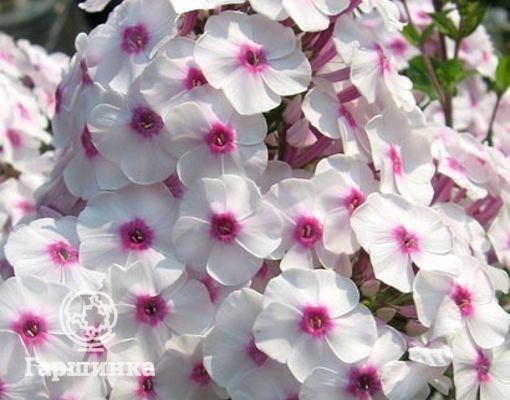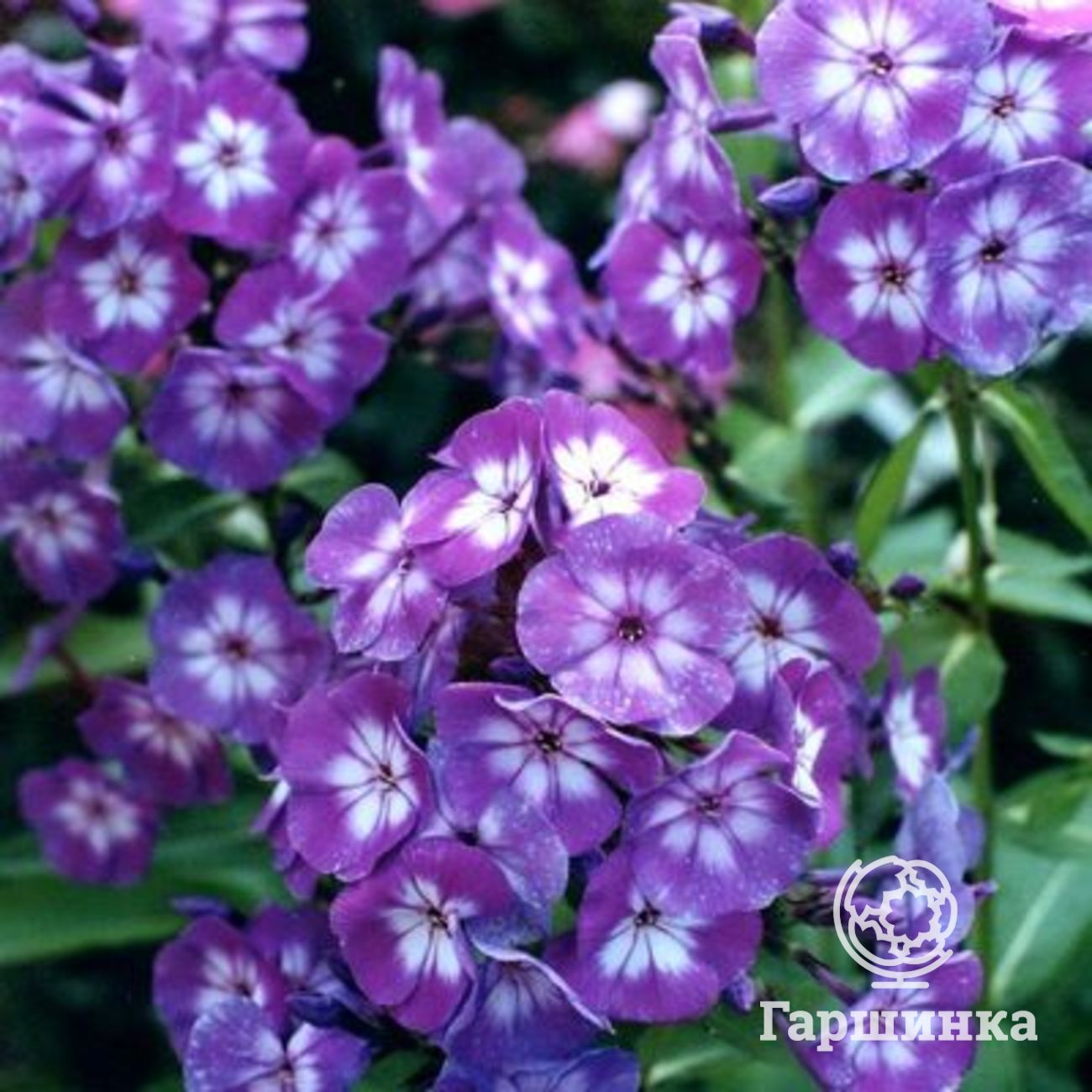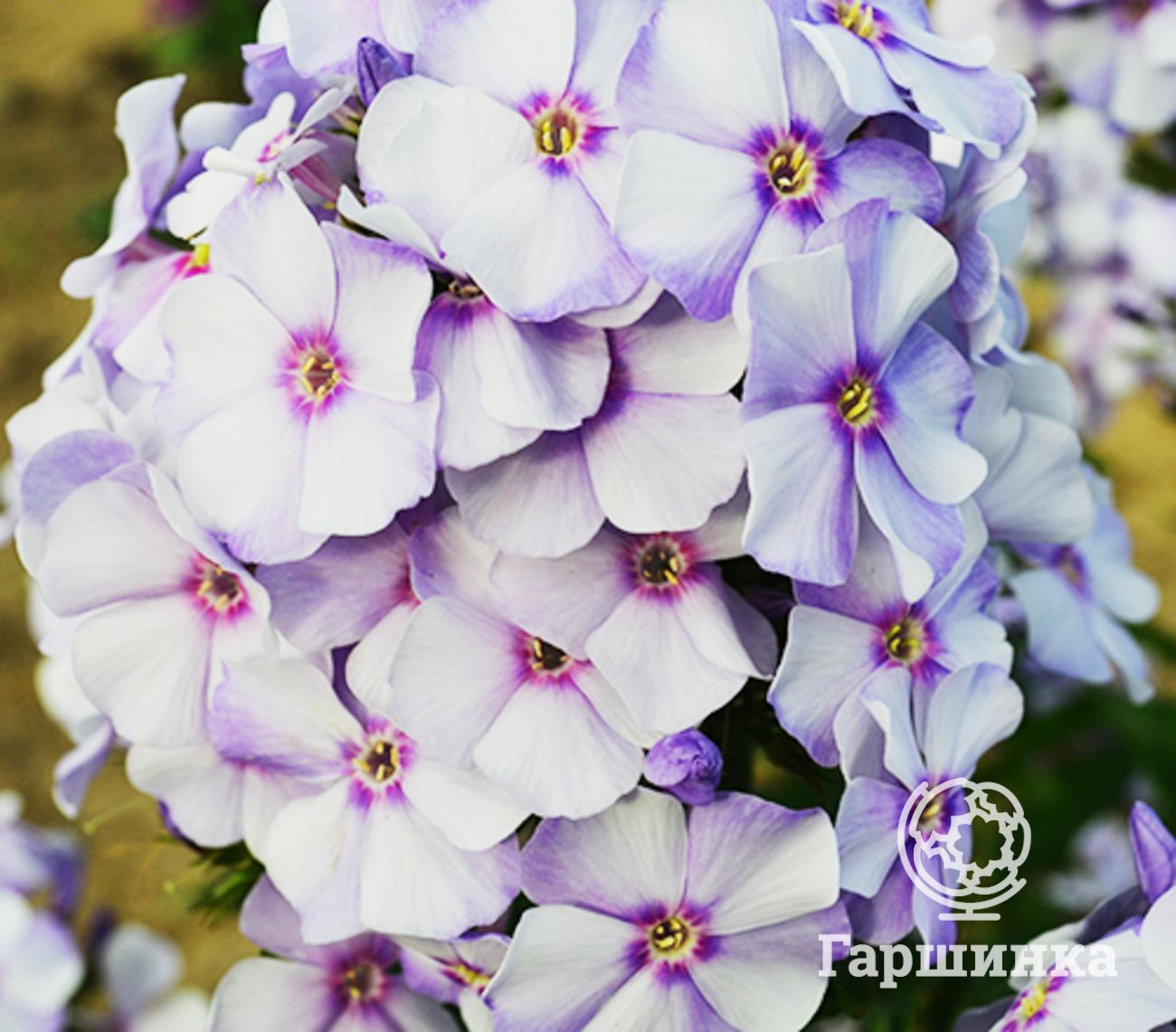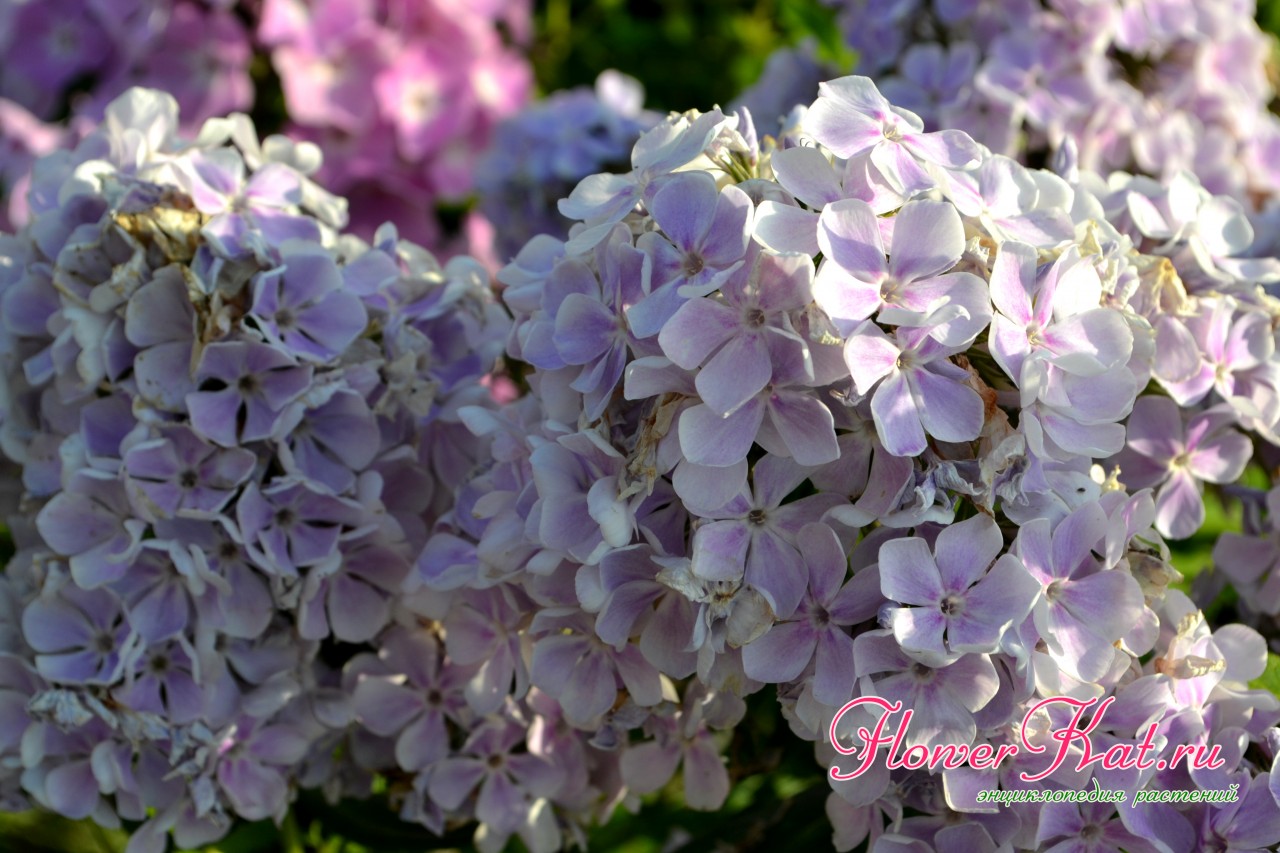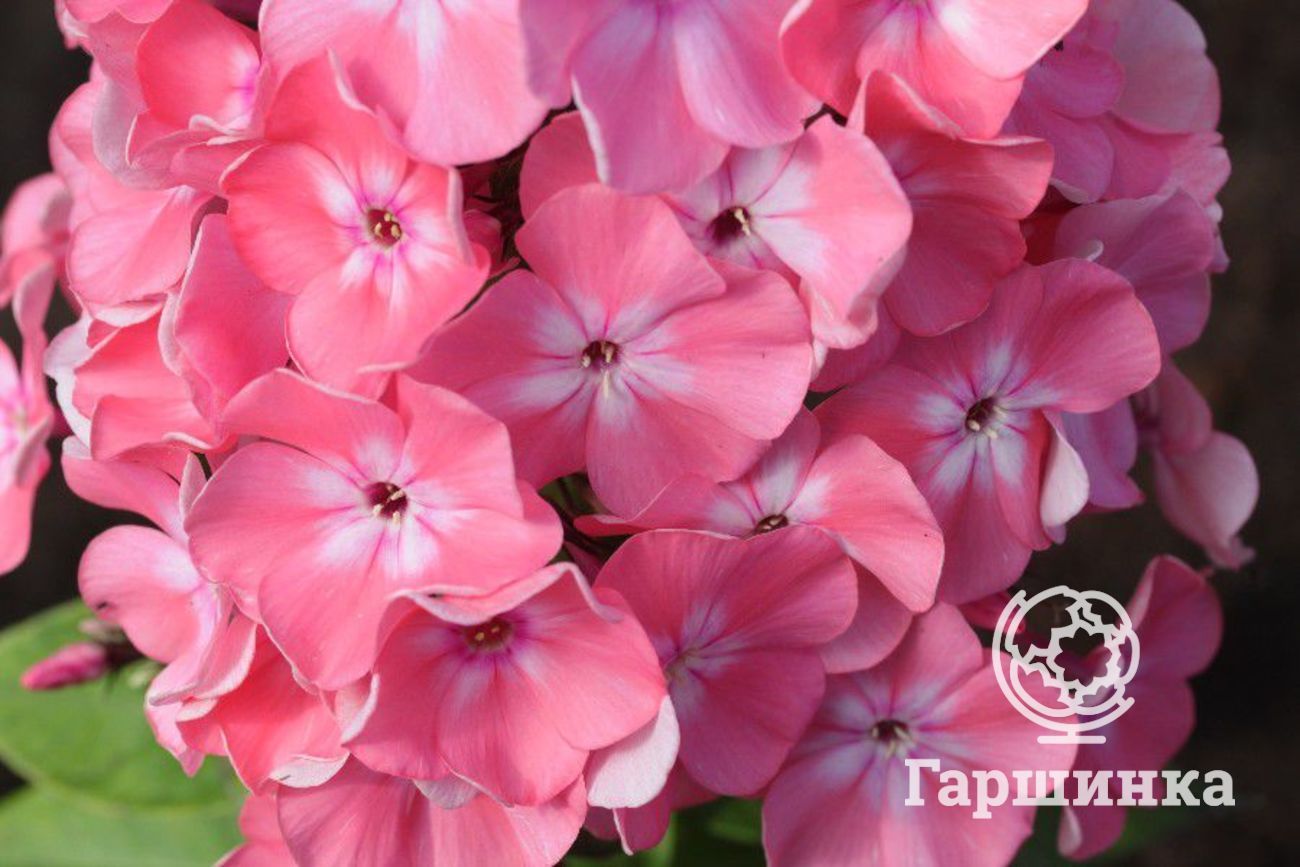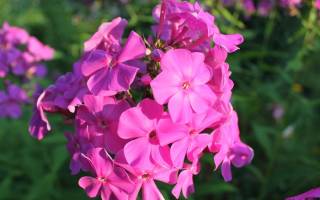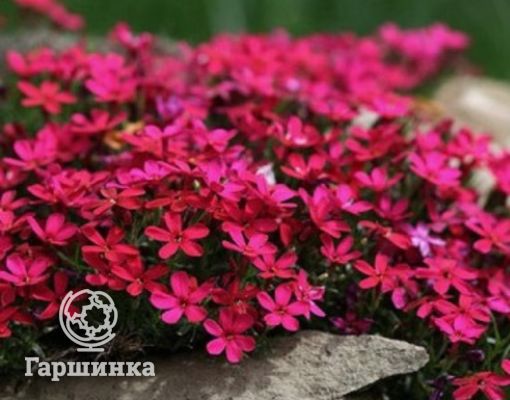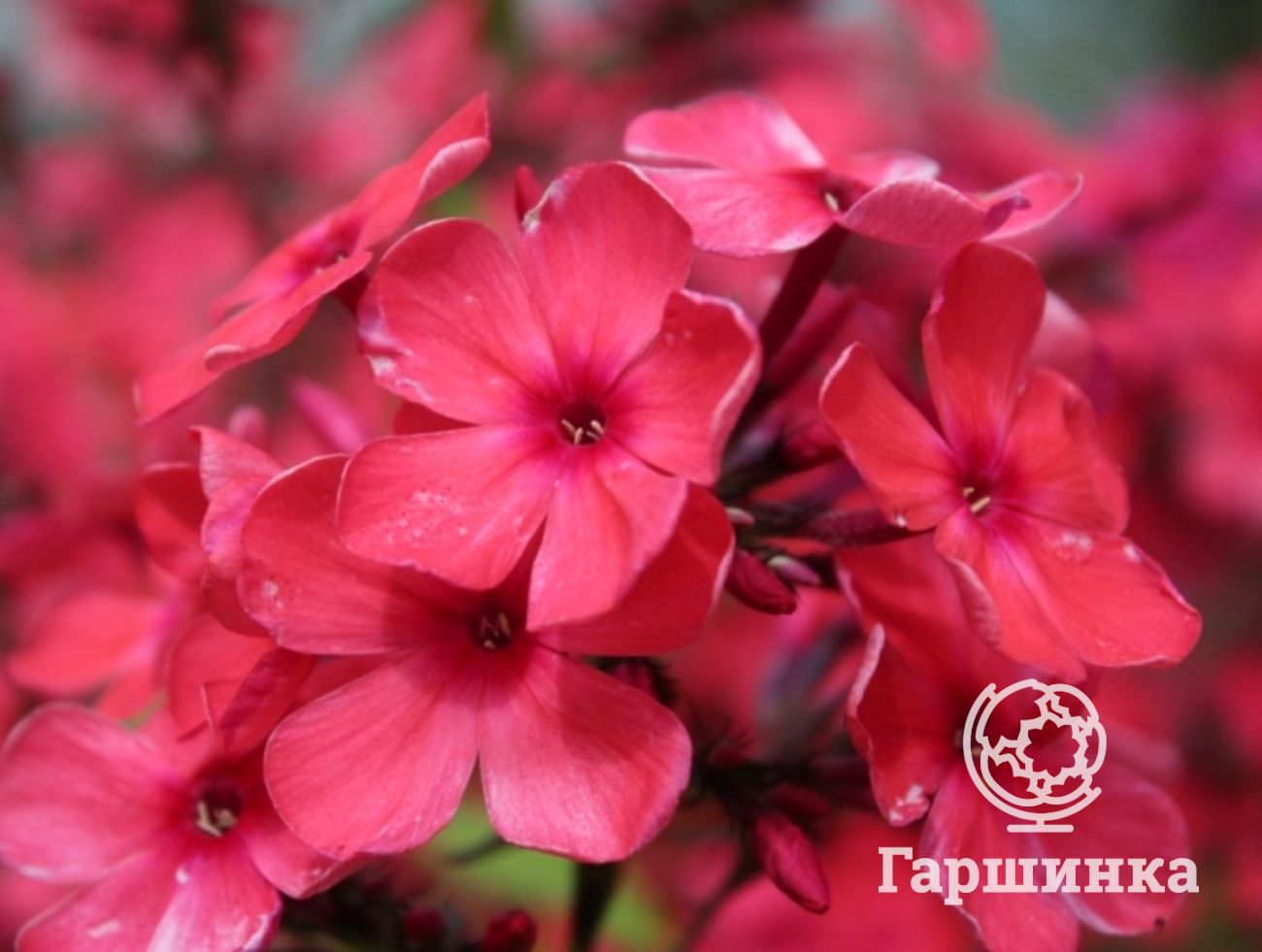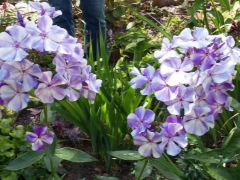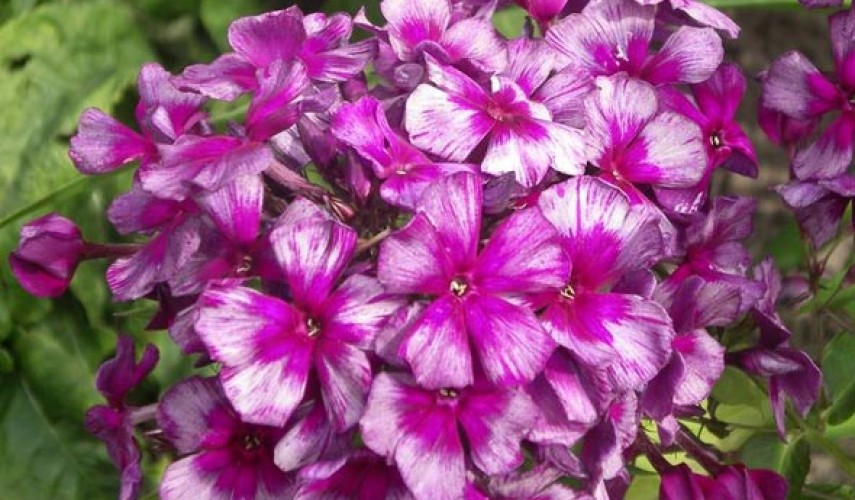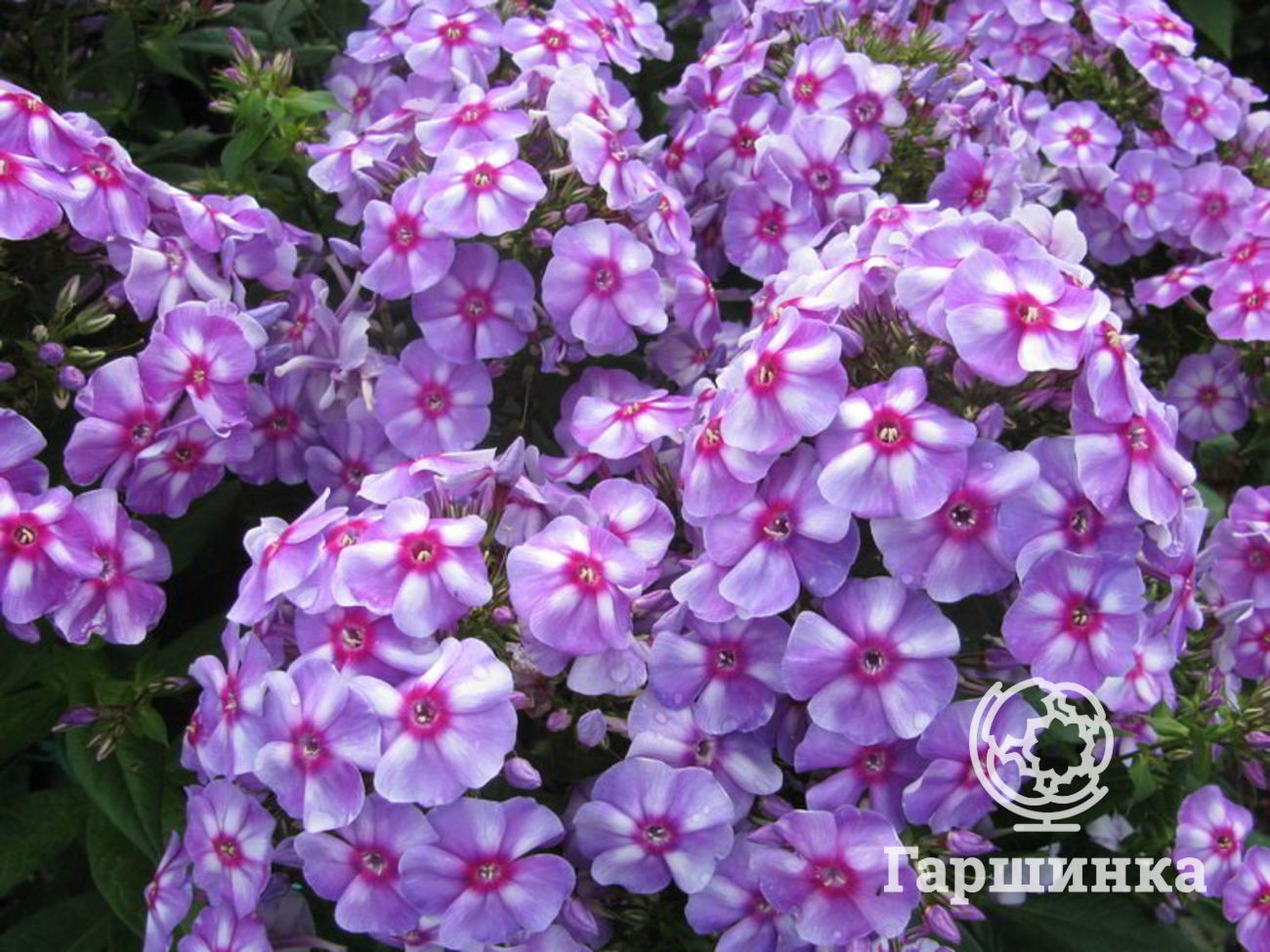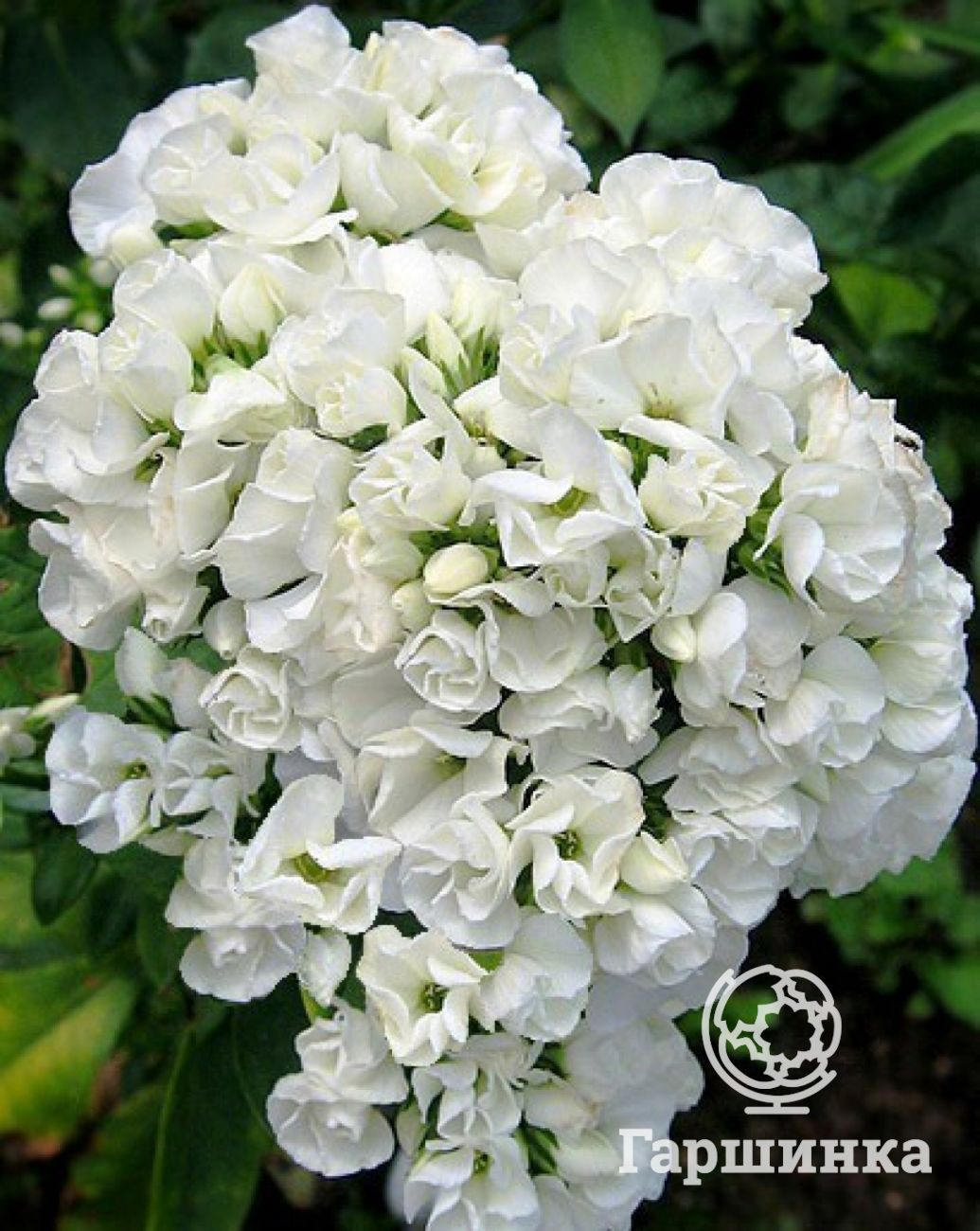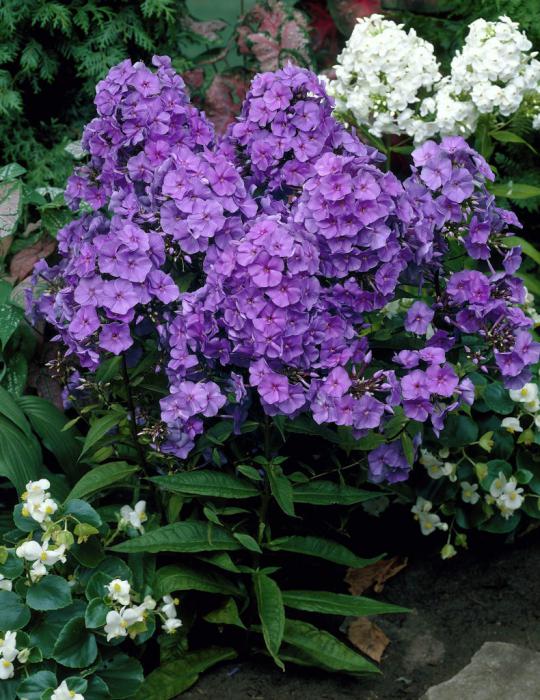Care
In order for the plant to please with its lush and abundant flowering, it must be properly looked after. These flowers are not too whimsical, therefore they do not need daily supervision, it is enough to adhere to the general rules.
Pruning and garter
Pruning phlox at the end of the summer season is considered mandatory. Plants that bloom early in early summer are pruned in late August or early September. Late flowering plants are pruned in October before the frost begins. In autumn pruning, all shoots are completely removed almost to the ground. Only 10 cm should be left outside.
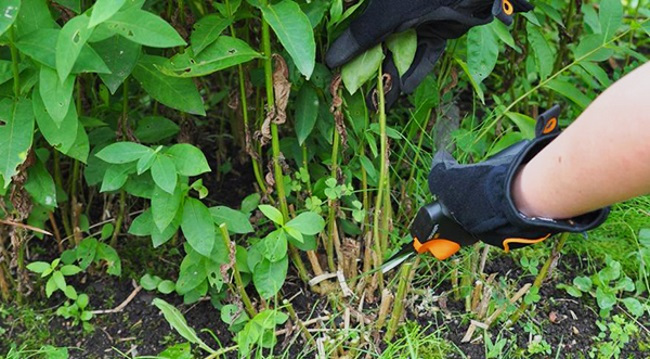
Autumn pruning of phlox is a must
Note! In spring and summer, shoots are cut, which spoil the appearance of the shrub: twisted, weak, damaged. Some gardeners practice spring pinching of shoots.
This increases the splendor of the bush. The downside of this method is the reduction of flowers in diameter.
How to prepare a plant for wintering
In order for the plant to survive the winter safely, you can cover the roots with peat. The plant is winter-hardy and, thanks to pruning, does not need a separate covering material. However, care should be taken to ensure that the roots of the plant are not exposed. You can also add a small amount of mineral, organic fertilizers and a little ash before wintering. It is also necessary to ensure that there is no accumulation of moisture in the roots, otherwise they will freeze.
Care Tips for Lush Bloom
When planting phlox, you should be aware that from time to time you will have to help your wards in the process of their growth: water, loosen the ground, fertilize. Proper care is the key to lush flowering.
Did you know? The popular name for phlox is "chintz". All due to the fact that its inflorescences are associated with a variegated and light color of chintz fabric.
Watering
On dry days, phlox should be watered once a day (morning or evening) under the root. For one square meter, you need to spend one and a half to two buckets of water (one bush consumes about two liters). Watering plantations with cold water in hot weather can adversely affect their vital activity: fragile stems in this case crack.
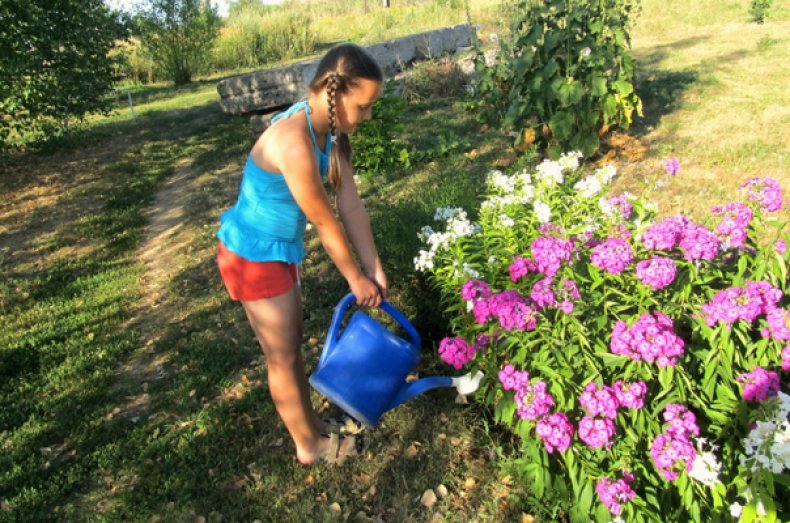
Weeding and soil care
Periodic loosening of the soil under phlox is the key to their proper growth and development. The site should be kept in order and cleaned of weeds that can harm the root system of the plant or become a source of its diseases.
Did you know? Due to the spherical or umbellate shape of the inflorescences, in which dozens of flowers are combined, phlox is interpreted and revered as a symbol of reciprocity and unity.
Top dressing
To help the root system of phlox paniculata to form correctly, it is advised to feed the plant with organic and mineral additives.
Optimal fertilization is liquid manure with potassium salt or phosphorus. You need to fertilize the bushes five times: in May, June, early and late July. The last fertilization should be done during the seed formation period.
Pruning
The faded and dried phlox tops must be cut off, and then the rhizome should be covered with soil, peat or wooden bran to prepare it for winter and protect it from frost.

Wintering
Phlox bushes are cold-resistant enough, but it is still worth playing it safe. In the case of a winter with little snow, frost can harm the plantings, so it is worth additionally wrapping them with straw, coniferous branches or tree leaves. Snowy winter, on the other hand, contributes to excellent "rest" of plants.
What does the plant love and what is it afraid of?
This type of phlox prefers sunlight, with little shading, especially during the hottest time. It can grow in partial shade, but then the bush grows too tall, and does not bloom so abundantly and much later.Loves moderate moisture, it is hard to endure a dry period. Prefers rich fertilized soil, grows poorly on acidic. Phlox can be affected by powdery mildew, a variegated virus. Stem nematodes, which almost completely destroy the plant, are especially dangerous for the bush. To avoid this trouble, you should carefully monitor the quality of the soil and planting material. Without a doubt, paniculata phlox is one of the most attractive and cheerful flowers in any garden. It impresses with its unusual beauty and fragrant aroma. And with proper planting and proper care, it will delight with its lush flowering and bright colors all season.
Planting and care in the open field
Phlox paniculata can be planted in spring, summer and even autumn. But spring is considered the most favorable for planting this plant. This is due to the fact that during this period the culture takes root better. If you decide to plant in the fall, then it is recommended to do this in the first half of September. This will enable the plant to take root and grow stronger before the onset of cold weather. In summer, planting is best done in early June.
When we have already found out to plant phlox, now we will consider how to plant them correctly. There is a certain algorithm for planting a flower:
- First you need to prepare a bed, dig up and remove weeds.
- Then add wood ash, organic and mineral fertilizers. Fertilizers are embedded to a depth of 15 cm, since the bulk of the roots is located there. Then water well so that the soil is saturated with moisture.
- Perennial plants should be planted in the evening or in cloudy weather. Tall phloxes are placed at a distance of 50 cm from each other, undersized ones - 40 cm. The length of the roots should be about 10 cm, the rest must be cut with pruning shears. In adult plants, the stems are cut in half, then the plant itself is dug up. The rhizome is divided by hands into several parts, while removing excess soil. At the base of the stem are vegetative buds, of which new shoots will soon appear. Without them, the root of the plant will die. Each young bush should have at least eight such buds. When dividing, you need to remove the old parts of the root system and immediately place the bushes in new holes.
- Vegetative buds need to be sprinkled with earth about five centimeters and watered well. For the first two weeks, new bushes should be watered every other day, periodically loosening the ground and mulching with peat.
If you chose autumn for planting phlox, then for the winter the plants should be covered with chopped straw or small shavings. In May, it is recommended to fertilize with any nitrogen fertilizer.
The best place to plant phlox will be areas with good lighting and light shade from the bushes. Also, there should be no wind in such an area so that the plant can easily overwinter. It is not recommended to plant flowers from the north side of the house.
Buy / order Phlox paniculata Cleopatra in the nursery. Mail delivery | Online store of garden plants
Phlox paniculata Cleopatra. - The flowers are cherry pink, fragrant, very unusual, star-shaped, may have an additional row of short rudimentary petals.
Description Phlox paniculata Cleopatra. Powdery mildew resistance is increased. Height: 60-80 cm. Flower size 3.5-4 cm. Winter hardiness zone: 4 Early flowering period (July-August).
Phlox paniculata is a perennial herb of the Sinyukhovye family. The homeland of phlox is North America. One of the most popular crops in floriculture, it is valued for its unpretentiousness, winter hardiness, bright, lush, long flowering.
The height of the plant varies from 40 to 150 cm. The powerful root system is located in the upper layers of the soil and is perennial, but the aboveground part of the plant dies off annually. Stems of phlox paniculata are erect, with elongated pointed leaves.
Inflorescences can be round, cylindrical, oval-conical, pyramidal and hemispherical, of a wide variety of colors, except for yellow. Phlox flowers with a diameter of 2.5 to 4 cm, do not open at the same time.
Varieties differ in flowering time and can be early, medium and late flowering.
Landing site for Phlox paniculata Cleopatra.
An area with diffused lighting is considered optimal for planting phlox, scorching sunlight can burn the leaves of the plant.
Phloxes do not like drafts, do not grow well under tree crowns, on the slopes and on the north side of the site. The best soil will be fertile, well-moistened, but without stagnant water.
Landing Phlox paniculata Cleopatra. Before planting, the site is dug to a depth of about 35 cm. Sandy soils are improved by the introduction of humus, acidic soils are lime in the fall. Drainage is required on clay soils. The distance between plants when planting depends on their size in adulthood, and varies from 30 to 70 cm.
On thickened plantings, the decorativeness of the plant is lost, in addition, phlox grow in one place without transplanting for up to 7 years, so they need to take a fairly spacious area in advance. Before planting, back soil is poured into the pit, fertilizers are added, and watered. The roots of the plant are buried 4 cm into the soil, sprinkled with garden soil on top, compacted, watered abundantly.
Phlox paniculata Cleopatra. care. Phlox care is not at all burdensome.
You do not need to cover phloxes for the winter, they tolerate frosty winters well. With the onset of cold weather, phloxes are cut at a height of no more than 10 cm from the soil level.
Reproduction Phlox paniculata Cleopatra .. The simplest and fastest way to reproduce phlox is to divide the bush, which is carried out in autumn or spring. Such plants bloom in the first year after planting. Perhaps phlox cuttings in June-July, for which they use young green shoots up to 10 cm long.
Using Phlox paniculata Cleopatra. in garden design.
Paniculate phlox are ideal for group and single plantings against the background of an emerald lawn, while it is possible to use single-color varieties or a combination of their various colors.
Phlox are indispensable in mixborders and country-style gardens. In this case, bells, aquilegia, rudbeckia, and carnations will be excellent neighbors for them. Phlox are excellent for cutting, keep freshness in water for a long time.
We store plants ready for shipment under special conditions. We pack the parcels in a reliable way. We inform about the shipment and control the parcel on the way.
Here you can buy various planting material: seedlings of roses, fruit and ornamental trees and shrubs, all groups of conifers, standard species, rhizomes of perennial flowers, bulbs of autumn and spring planting, lawn grass seeds, fertilizers and pest control products.
Choosing a suitable landing site
Despite its unpretentiousness, paniculata phlox requires certain planting and care rules to be followed.
The first thing you need to pay attention to is the choice of seat
Lighting
The plant prefers shaded areas, overheating of the root system is extremely harmful to it. In sun-drenched places, flowers quickly fade, lose their attractiveness, become oppressed.
Important! The brighter the color of the phlox flowers, the less sunlight it needs. For example, blue flowers will only look beautiful if you plant the plant in the shade.
The soil
Phlox beds are advised to plan on soils with a high humus composition and a well-established drainage system. If your site is dominated by soils with an increased level of acidity, then they will have to be "fertilized" with lime, since the plant does not take root on oxidized soils.
The optimal soil type for a plant is sandy soil. With proper watering in such a flower bed, the plant will feel great.
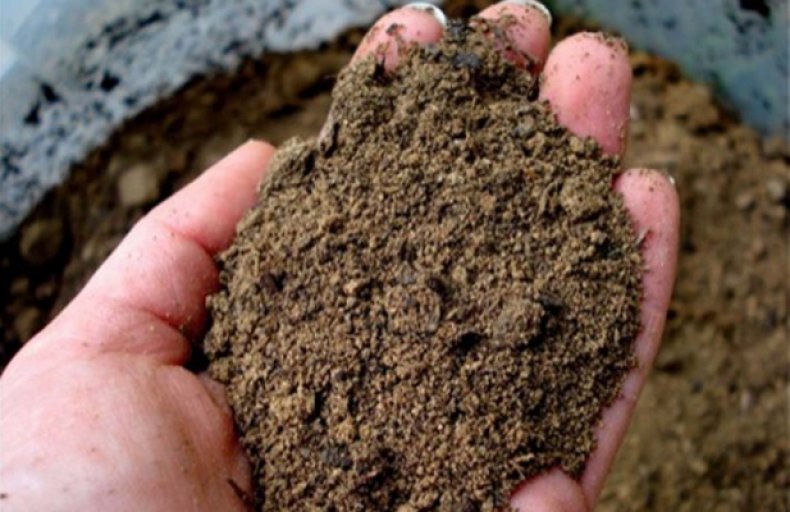
Application in landscape design
Bright inflorescences of phlox paniculata help to create a cheerful landscape design, refine flower beds, front gardens, alpine slides, rose gardens.
Phlox plantings can be easily turned into elegant color compositions, for this you just need to choose and experiment with the varieties of paniculata phlox, of which there are a lot (you have already seen the description and photos of some of them above).
Did you know? Phlox are especially popular in Japan. Every year in March-June, the country organizes the phlox bloom festival - "hanasampo", which translates as "flower walk".
Phloxes also look spectacular in combination with other garden flowers. For example, bright phlox inflorescences are in harmony with white chamomile flowers.
In summer, phloxes prefer to coexist with carnations, alpine asters, geraniums, veronica, small petals
These plants differ in approximately the same conditions of care, which is important when decorating flower beds.
Autumn phlox flower beds should be diversified with barberry or crocus. Phlox paniculata is not just a favorite of florists and florists, but also the main instrument of the work of landscape designers, a leading figure in flower exhibitions.
The variegated palette of flower colors, its lush inflorescences, fragrant aroma will not leave indifferent any esthete. But to obtain such an effect, you will have to make rational efforts.


